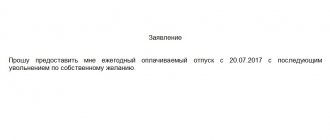The specifics of establishing working hours - part-time work or a shortened working week, as well as the procedure for involving overtime work, night work, weekends or non-working holidays in practice raise many questions. Let’s try to understand the nuances of the legislation together, and also consider examples of document preparation and established judicial practice.
According to the Labor Code of the Russian Federation, work and rest regimes are qualified as essential terms of an employment contract, which can be changed only by agreement of the parties. First, let's figure out what each of these concepts includes.
For the absence of mandatory documents establishing working hours and rest periods, the employer is responsible
According to Art. 91 of the Labor Code of the Russian Federation, working time is the time during which the employee, in accordance with the internal labor regulations and the terms of the employment contract, must perform labor duties. In addition, other periods specified in labor legislation also include working time:
- breaks for rest and meals at the place of work (Article 108 of the Labor Code of the Russian Federation);
- special breaks for heating and rest (Article 109 of the Labor Code of the Russian Federation);
- breaks for feeding the child (Article 258 of the Labor Code of the Russian Federation);
- inter-shift rest while on shift (Article 299 of the Labor Code of the Russian Federation);
- business trip period (Article 166 of the Labor Code of the Russian Federation);
- downtime (Article 72.2 of the Labor Code of the Russian Federation), etc.
Article 106 of the Labor Code of the Russian Federation establishes that rest is the time during which an employee is free from performing work duties and which he can use at his own discretion.
According to Art. 107 of the Labor Code of the Russian Federation, types of rest time are:
- breaks during the working day (shift);
- daily (between shifts) rest;
- weekends (weekly uninterrupted rest);
- non-working holidays;
- vacation.
The difference between the concepts of “working time” and “working time” is that the first of them is characterized by duration (for example, no more than 40 hours per week), and the second provides for the start and end time of work, the alternation of working and non-working days in a certain calendar period, break times, etc.
Labor legislation also establishes a list of mandatory documents establishing working hours and rest periods (Fig. 1). The employer is responsible for the absence of such documents.
Normal working hours cannot exceed 40 hours per week. To establish working time norms for certain calendar periods (month, quarter, year), you should be guided by Order of the Ministry of Health and Social Development of the Russian Federation dated August 13, 2009 No. 588n, according to which the norm is calculated according to the calculated schedule of a five-day working week with 2 days off on Saturday and Sunday based on the duration daily work (shift). With a 40-hour work week, this norm would be 8 hours. If the working week is less than 40 hours long, it is determined as follows: the established working week length in hours is divided by 5.
The standard working time for a specific month is calculated as follows: the length of the working week (40, 39, 36, 30, 24 hours, etc.) is divided by 5, multiplied by the number of working days according to the calendar of the five-day working week of a specific month and subtracted from the result obtained the number of hours in a given month by which working time is reduced on the eve of non-working holidays.
Let's calculate the standard working hours in November 2011.
With a 40 hour work week:
40 hours: 5? 21 days – 1 hour = 167 hours
With a 36-hour work week:
36 hours: 5? 21 days – 1 hour = 150.2 hours
For some categories of workers, the legislation provides for reduced working hours and a minimum duration of daily work (shift). The list of such categories of workers and benefits (social support measures) is given in table. 1.
It is necessary to distinguish between concepts such as reduced working hours and part-time working. Their comparative characteristics in accordance with Articles 92 and 93 of the Labor Code of the Russian Federation are presented in table. 2.
Table 1
Categories of workers for whom reduced working hours are established
| Category of workers | Legal act | Privileges |
| Length of working hours per week | ||
| Workers under 16 years of age | Art. 92 Labor Code of the Russian Federation | No more than 24 hours |
| Workers aged 16 to 18 years | Art. 92 Labor Code of the Russian Federation | No more than 35 hours |
| Students of general education institutions under the age of 18 working during the academic year in their free time from school | Art. 92 Labor Code of the Russian Federation | No more than half of the standards listed above established for persons of the appropriate age |
| Employees engaged in work with harmful and (or) dangerous working conditions | Art. 92 Labor Code of the Russian Federation | No more than 36 hours |
| Employees who are disabled people of group I or II | Art. 92 Labor Code of the Russian Federation | No more than 35 hours |
| Women working in the Far North and similar areas | Art. 320 Labor Code of the Russian Federation | No more than 36 hours |
| Women working and living in rural areas | Resolution of the Supreme Court of the RSFSR dated November 1, 1990 No. 298/3-1 “On urgent measures to improve the situation of women, families, maternal and child health in rural areas” | No more than 36 hours |
| Duration of daily work (shift) | ||
| Workers aged 15 to 16 years | Art. 94 Labor Code of the Russian Federation | No more than 5 hours |
| Workers aged 16 to 18 years | Art. 94 Labor Code of the Russian Federation | No more than 7 hours |
| Students aged 16 to 18 years who combine study and work during the school year | Art. 94 Labor Code of the Russian Federation | No more than 4 hours |
| Students aged 14 to 16 years who combine study and work during the school year | Art. 94 Labor Code of the Russian Federation | No more than 2.5 hours |
| Employees engaged in work with harmful and (or) dangerous working conditions, where reduced working hours are established: | ||
| with a 36-hour work week; | Art. 94 Labor Code of the Russian Federation | No more than 8 hours |
| with a 30 hour work week | Art. 94 Labor Code of the Russian Federation | No more than 6 hours |
| Disabled people | Art. 94 Labor Code of the Russian Federation | According to medical report |
table 2
Working and rest hours for certain categories of workers
As noted above, in relation to certain categories of workers, the legislation has adopted special norms regulating the duration of their work and rest. For example, Art. 333 of the Labor Code of the Russian Federation establishes a reduced working time for teaching staff (36 hours per week), and in Art. 334 of the Labor Code of the Russian Federation provides for extended annual paid leave for this category. In addition, this category is provided with additional leave of up to one year, provided in accordance with Art. 335 of the Labor Code of the Russian Federation, every ten years.
Additional annual leave is provided for irregular working hours, for workers in the Far North, in workplaces with dangerous and harmful working conditions established by a special assessment of working conditions, and in some other cases (Article 116 of the Labor Code of the Russian Federation).
Please note that vacation time does not include parental leave, because This is an additional measure to protect maternity, regulated by special articles of the Labor Code of the Russian Federation. In practice, it is possible to use these special rules together with provisions on rest periods. For example, when a woman becomes pregnant, she has the right to go on annual leave before maternity leave, while the vacation schedule, as well as the duration of work, do not matter, but it is regulated according to the general rules for granting vacations.
The categories of work and rest time are some of the defining ones in labor legislation and their correct understanding is relevant for each party to the labor relationship because Only in this case can we ensure compliance with all requirements of labor legislation and full protection of the rights of the employee and employer.
Reduced working hours and part-time work
| Shortened working hours (Article 92 of the Labor Code of the Russian Federation) | Part-time work (Article 93 of the Labor Code of the Russian Federation) |
| Part-time work (Article 93 of the Labor Code of the Russian Federation) | Established by agreement of the parties to the employment contract (employee and employer), the initiative can come from any party |
| Applicable to certain categories of workers | Can be used regardless of the category of workers |
| Payment is calculated in the amount provided for normal working hours, with the exception of employees under the age of 18 | Remuneration is made in proportion to the time worked |
Part-time work
Working time of less than 40 hours per week is considered part-time. There are several types depending on the period being shortened. A working day or shift may be part-time (for example, an employee works not 8 hours a day, but 6). A part-time working week is also used (for example, 3 eight-hour working days per week). There is also a mixed type, when the conditions of part-time work (shift) and part-time work week are applied simultaneously (the employee works 4 days a week for 7 hours).
Workers in the following categories can count on part-time work:
- pregnant women (Article 93 of the Labor Code of the Russian Federation);
- one of the parents (guardian, trustee) who has a child under the age of 14 years or a disabled child under the age of 18 (Article 93 of the Labor Code of the Russian Federation);
- a person caring for a sick family member in accordance with a medical certificate issued in the prescribed manner (Article 93 of the Labor Code of the Russian Federation);
- a woman on parental leave until the child reaches 3 years of age, as well as the child’s father, grandmother, grandfather, other relative or guardian actually caring for the child (Article 256 of the Labor Code of the Russian Federation);
- graduate students studying by correspondence (Article 19 of the Federal Law of August 22, 1996 No. 125-FZ “On Higher and Postgraduate Professional Education”).
In order for a part-time working regime to take effect for an employee, he should: 1) write an application indicating the desired length of working time, as well as the date from which it will apply; 2) provide a document confirming the right to establish part-time work. Appendices 1–5 contain sample documents required to establish part-time work.
In Fig. 2 presents the procedure for establishing a part-time working regime at the initiative of the employer. It must be remembered that in this case the employer is obliged to inform the employment service about the planned changes in writing within 3 working days after the relevant decision is made (Clause 2 of Article 25 of the Law of the Russian Federation of April 19, 1991 No. 1032-1 “On Employment of the Population in the Russian Federation "). The introduction of such a regime at the initiative of the employer is possible for a period of no more than 6 months (Part 5 of Article 74 of the Labor Code of the Russian Federation).
We examined general issues of working time planning, as well as the procedure for establishing part-time work and a reduced working week. In the next part of the article we will talk about involvement in overtime work, the peculiarities of work at night, on weekends or non-working holidays and payment for this type of work.
Picture 1
Working time and rest time
Briefly, an article of the Labor Code of the Russian Federation determines that working time means the period when an employee must perform the duties stipulated by the employment contract. The same article determines that the normal weekly working time should not exceed forty hours. Detailed regulation of working hours is contained in the section of the Labor Code of the Russian Federation.
The concept of “rest time” is enshrined in Art. 106 of the Labor Code of the Russian Federation, which defines it as time free from performing work duties. Article 107 of the Labor Code of the Russian Federation establishes the types of rest that are provided to the employee (breaks during the day (shift), daily (between shifts) rest, weekends (weekly rest), non-working holidays, vacations), and subsequent articles regulate each of them in detail .
Commentary on Article 100 of the Labor Code of the Russian Federation
The working hours are regulated by Chapter 16 of the Labor Code of the Russian Federation. Working hours in labor law mean the distribution of standard working hours for a given category of workers within a certain calendar period.
According to Article 100 of the Labor Code of the Russian Federation, the working time regime must provide for the length of the working week (5-day with two days off, 6-day with one day off, working week with days off on a sliding schedule; daily and summarized recording of working hours); work with irregular working hours for certain categories of workers; duration of daily work (shift); start and end times of work; time of breaks from work; number of shifts per day; alternation of working and non-working days, which are established by a collective agreement or internal labor regulations of the organization.
Working hours can only be established by internal labor regulations, in contrast to the current norm, which allows it to be enshrined in a collective agreement. For employees with an individual regime, it is established by the employment contract.
Part-time working time is allocated as a separate working time mode.
Working hours are established for persons who have entered into an employment contract, i.e. for workers. In this regard, it is necessary to distinguish between the working hours of employees and the operating mode of the organization itself. For example, the organization is continuously operating (works around the clock), and employees work in shifts. Currently, the working hours for all employees may be the same. It may be different for employees of individual departments. The parties to an employment contract, by mutual agreement, can also establish an individual work schedule, if this does not worsen the employee’s working conditions in comparison with current legislation or a collective agreement.
The Government of the Russian Federation adopted Resolution No. 877 of December 10, 2002 “On the peculiarities of working time and rest time for certain categories of workers with a special nature of work,” which establishes that, in accordance with Article 100 of the Labor Code of the Russian Federation, the Government of the Russian Federation decides to establish that the peculiarities of the regime working hours and rest time for certain categories of workers with a special nature of work are determined by the relevant federal executive authorities in agreement with the Ministry of Labor and Social Development of the Russian Federation and the Ministry of Health of the Russian Federation.
Currently the following provisions have been approved:
1) Order of the Ministry of Transport of the Russian Federation dated August 20, 2004 N 15 “On approval of the Regulations on the peculiarities of the working hours and rest periods of car drivers”;
2) Order of the Ministry of Railways of the Russian Federation dated March 5, 2004 N 7 “On approval of the Regulations on the peculiarities of working hours and rest periods, working conditions of certain categories of railway transport workers directly related to the movement of trains”;
3) Order of the Ministry of Transport of the Russian Federation dated January 30, 2004 N 10 “On approval of the Regulations on the peculiarities of the working hours and rest periods of workers performing air traffic control of civil aviation of the Russian Federation”;
4) Order of Roshydromet dated December 30, 2003 N 272 “On approval of the Regulations on the peculiarities of working hours and rest time for employees of operational and production organizations of Roshydromet, their structural divisions that have a special nature of work”;
5) Order of the Ministry of Communications of the Russian Federation dated September 8, 2003 N 112 “On approval of the Regulations on the peculiarities of working hours and rest time for communication workers with a special nature of work”;
6) Order of the Federal Fisheries Committee of the Russian Federation dated August 8, 2003 N 271 “On approval of the Regulations on the peculiarities of working hours and rest time for certain categories of workers in the fishery complex who have a special nature of work”;
7) Order of the Ministry of Transport of the Russian Federation dated May 16, 2003 N 133 “On approval of the Regulations on the peculiarities of the working hours and rest periods of workers of floating vessels of inland water transport vessels”;
 Order of the Ministry of Defense of the Russian Federation dated May 16, 2003 N 170 “On the peculiarities of working hours and rest time for crew members (civilian personnel) of support vessels of the Armed Forces of the Russian Federation”;
Order of the Ministry of Defense of the Russian Federation dated May 16, 2003 N 170 “On the peculiarities of working hours and rest time for crew members (civilian personnel) of support vessels of the Armed Forces of the Russian Federation”;
9) Order of the Ministry of Finance of the Russian Federation dated April 2, 2003 N 29n “On approval of the Regulations on the peculiarities of working hours and rest time for employees of organizations engaged in the extraction of precious metals and precious stones from alluvial and ore deposits”;
10) Resolution of the Ministry of Labor of the Russian Federation of July 12, 1999 N 22 “On establishing the duration of the working week for crew members of civil aviation aircraft”;
11) Resolution of the Ministry of Labor of the Russian Federation dated February 20, 1996 N 11 “On approval of the Regulations on working time and rest time for workers of floating ships of the maritime fleet.”
The Labor Code of the Russian Federation regulates the following types of working hours, which are established by a collective agreement or internal labor regulations:
1) daily recording of working hours;
2) summarized recording of working time;
3) irregular working hours;
4) flexible working hours;
5) multi-shift operating mode;
6) working day, divided into parts.
Breaks for rest and food
In accordance with Art.
108 of the Labor Code of the Russian Federation, during the working day (shift), the employee must be given a break for rest and food lasting no more than two hours and no less than 30 minutes. In practice, such a break is called “lunch” or “lunch break”. Its duration should be determined based on specific conditions, taking into account the specifics of the employer’s activities and the existing catering organization for employees. The specific duration of lunch is established by internal labor regulations or by agreement between the employee and the employer.






